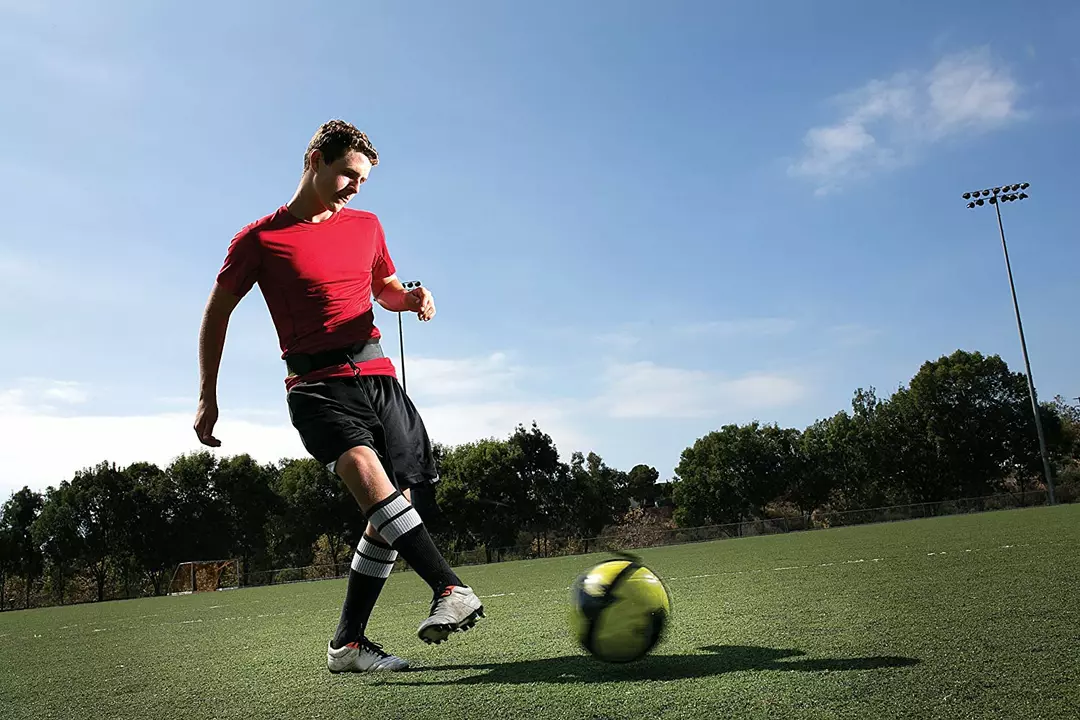Understanding the Science Behind Ball Lift
Before we dive into the techniques for causing a soccer ball to lift, it's important to understand the science behind it. When you kick a soccer ball, the force of your foot against the ball creates a spin. This spin, combined with the air pressure around the ball, causes it to lift off the ground. The Magnus effect, a scientific principle named after Heinrich Gustav Magnus, explains this phenomenon. The more spin you create, the more lift you'll achieve. Now that we have a basic understanding of the science, let's explore some techniques to help you lift the ball when kicking it.
Mastering the Right Kicking Technique
The first step to lifting a soccer ball is to master the right kicking technique. Start by positioning your non-kicking foot next to the ball, with your toes pointing towards your target. Your kicking foot should be angled slightly inward, with your toes pointed down and your ankle locked. As you swing your leg back, keep your eyes on the ball and focus on striking it with the top part of your foot, also known as the instep. Make sure to follow through with your kick, as this will help generate the necessary spin for the ball to lift.
Adding Spin to Your Kick
As mentioned earlier, spin is crucial for achieving lift on a soccer ball. To add spin, you need to strike the ball off-center, which will cause it to rotate in the air. The more spin you generate, the more lift you'll achieve. Practice striking the ball with different parts of your foot to find the most effective technique for adding spin. You can also experiment with different angles of approach, as this can have a significant impact on the amount of spin generated.
Focusing on the Point of Contact
The point of contact between your foot and the ball is critical for achieving lift. To create lift, you should aim to strike the ball slightly below its center. This will cause the ball to rotate upwards, generating the necessary lift. Practice kicking the ball at different heights to find the sweet spot for creating lift. As you become more comfortable with this technique, you'll be able to consistently lift the ball when kicking it.
Adjusting Your Body Position
Your body position plays a significant role in causing a soccer ball to lift. To generate lift, it's essential to lean back slightly as you kick the ball. This helps create the necessary upward trajectory for the ball to lift off the ground. Additionally, you should aim to make contact with the ball while your kicking leg is still rising. This will help create the desired backspin, contributing to the lift of the ball.
Practicing Different Types of Kicks
There are various types of kicks that can help you achieve lift on a soccer ball. Some of these include the chip shot, the side volley, and the bicycle kick. By practicing different kicks, you'll develop a better understanding of how different techniques can generate lift. As you become more skilled at these kicks, you'll be able to apply the principles of lift to a wider range of situations on the field.
Using the Right Equipment
While technique is critical for achieving lift on a soccer ball, using the right equipment can also make a difference. Make sure you're using a properly inflated ball, as an underinflated ball will not lift as easily. Additionally, wearing soccer cleats with good grip can help you generate more spin on the ball, leading to greater lift. Investing in quality equipment can make it easier for you to achieve the desired lift on a soccer ball.
Putting It All Together
Causing a soccer ball to lift when kicking it requires a combination of proper technique, spin, body position, and the right equipment. By understanding the science behind ball lift and practicing different techniques, you'll be able to consistently lift the ball in various situations on the field. Remember, practice is key, so keep working on your skills and experimenting with different methods until you find what works best for you.

